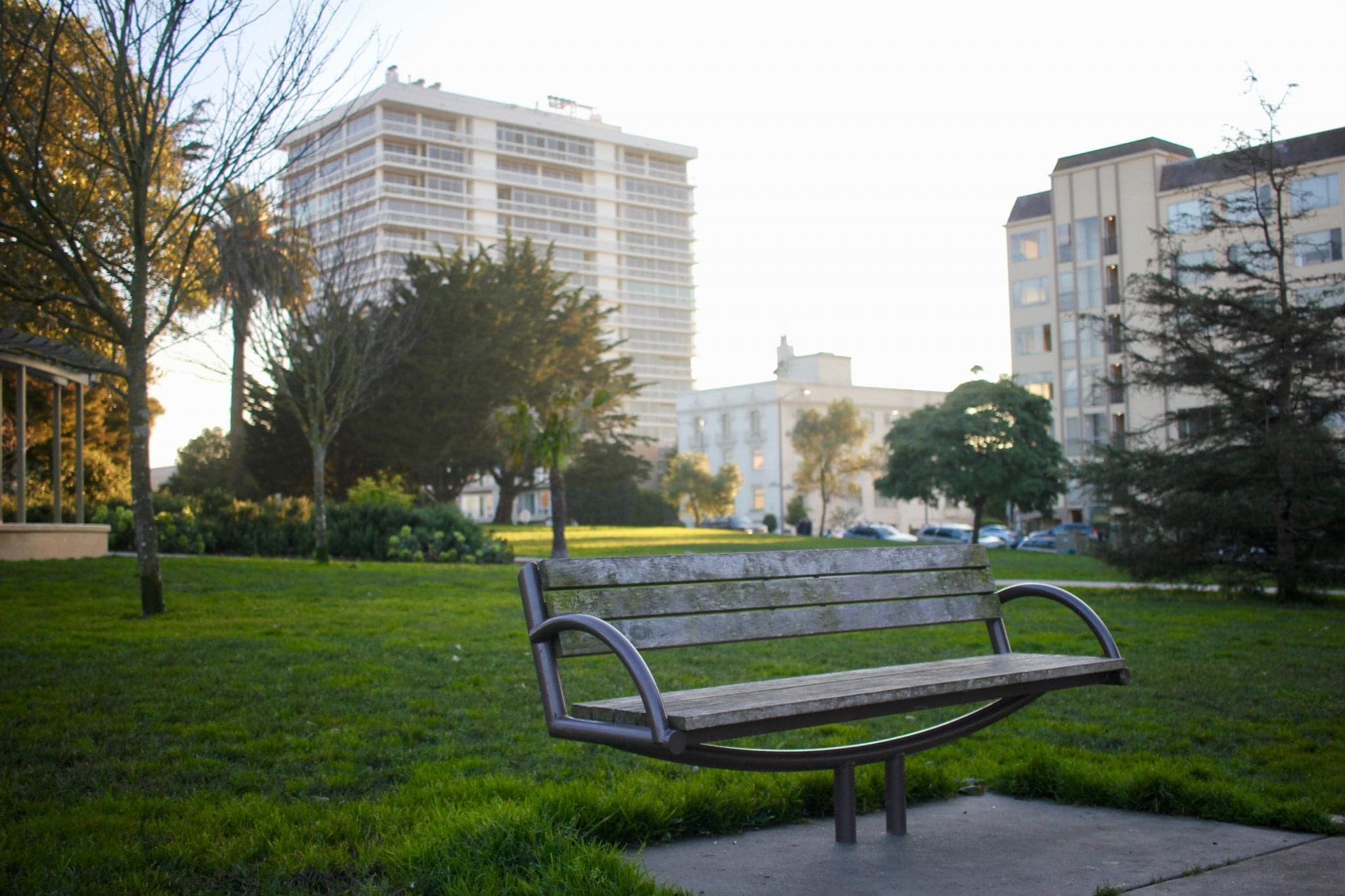Pushed out: How the Bay Area housing crisis is hurting senior citizens
Pushed out: How the Bay Area housing crisis is hurting senior citizens

Denise Varner has lived in Northern California her whole life. The 68-year-old was born in San Francisco, famous for its pastel-hued Painted Ladies houses — many of them steps away from the Pacific Ocean — and cable-car-lined hills. She moved to Santa Cruz, just over an hour by car from San Francisco, in 2010. Known for its tourist-haven boardwalk, laidback pace and slightly chilly weather, Santa Cruz is the epitome of a Northern California beach town.
But despite the picture of idyllic California chill the peninsula might project to the rest of the country, Varner’s housing situation isn’t anywhere close to ideal. For six years Varner lived in a rundown beach cottage. Then her landlady sent her an eviction notice. She was moving in a relative, and Varner had 60 days to find new housing. The waiting lists for low-income housing were full. And while Varner was scrambling, she was also trying to help college students find their own place to live — she works as a housing coordinator at a Bay Area university.
Varner found herself competing for housing against the very students, people less than half her age, she was also trying to help. And despite Varner’s seniority, she wasn’t in a stronger position: many of these students receive financial support from their parents, enabling them to afford a higher rent.
Eventually, Varner found a place: $1900 for a two-bedroom apartment, up $600 from her beach cottage. When she renewed her lease in June for another year, the price was bumped up to $1945. Varner notes this price is on the lower side for going rates of two-bedroom apartments in Santa Cruz, even though she spends over 75 percent of her income on rent — 45 percent more than what federal guidelines recommend.
Varner hardly ever takes vacations and can’t afford to travel. She never goes out to eat and attends only free events. She follows a vegan diet, doesn’t buy new clothes and owns a cell phone only because it’s a necessity. She never expected to have these housing problems at this stage in her life. She and her other older coworkers are living like college students — renting a room in a house or splitting the bill with roommates — even though they work full time.
Her story isn’t uncommon. The average monthly rent for an apartment, condo, co-op or single-family home in San Jose was $3,499 in September; the national average for an apartment is $1,412. Between 2010 and 2015, San Francisco created only one new home for every 6.8 new jobs.
It has become increasingly difficult to find an affordable place to live in the Bay Area. The housing crisis affects people of all backgrounds and demographics. But it’s especially stressful for senior citizens, who struggle with perpetually rising rent prices on a fixed income. Many of the 65 and older population, which is projected to double in size by 2050, are realizing that the Bay Area — where they’ve spent much or all of their lives — might not have room for them anymore.
“The Bay Area is undergoing a housing crisis,” says Kristen Clements, division manager on the Policy Team in the Housing Department of the City of San Jose. “I don’t think we’ve ever had this bad of an imbalance between people with different salary levels and then the kind of proportion of your household income that you have to spend on housing costs. I think it’s the worst that it has ever been here.”
What makes finding housing for seniors more difficult are the added needs that come with growing old. Seniors need places they can walk to and socialize at, like community centers and libraries. Isolation is an increasingly common problem among older adults — more than eight million nationwide are affected, and isolation has a greater effect on mortality than physical activity or obesity.
Many seniors live on fixed incomes and don’t have other opportunities to earn more money. “They may not be able to secure a full-time or part-time job to help meet the high cost of housing in this area, whereas people that are already in the working field may have that capability,” says Laura Fanucchi, associate executive director for HIP Housing, a nonprofit affordable housing organization. “We find it common where we see people working two or three jobs to afford their rent.”
And of course, there are the added health-care costs that come with aging. Even seniors covered by Medicare will spend a collective sum of $260,000 per couple on all their healthcare past age 65. Seniors who have lived in an area for a while have established relationships with doctors and know where to find resources, so it’s much harder for them to just pick up and leave, says Meghan Rose, general counsel and director of housing policy at LeadingAge California, a nonprofit for seniors.
These aren’t new problems, and they won’t be going away anytime soon. But the Bay Area housing crisis complicates the struggles seniors already face. Federal guidelines say a person shouldn’t spend more than 30 percent of their income on rent. But like Varner, Brenda Johnson*, 77, who has lived in the Bay Area for nine years, spends more than 50 percent of her income on her rent.
Johnson moved to California from Virginia nine years ago to be closer to her son, who was getting married. California was always attractive to her because of the weather. But she was used to owning property on the east coast, and it was a shock to not be able to do that easily in California. If her rent goes up at all, Johnson says, she’ll probably be forced to leave the state. “Housing has been the one expense that I have not been able to keep under control. I have to cut money in every other area, and I do,” Johnson says. “I’ve lived very frugally.”

In the mid-20th century, the federal Department of Housing and Urban Development entered many contracts with nonprofits to subsidize affordable housing, according to Rose. But many of these contracts are ending now, and nonprofits are realizing they can make more money by selling their government-subsidized properties than staying in the affordable housing market. As a result, there is even less affordable housing available for seniors in California.
A number of California regulations and laws dictate how properties can be bought and sold, and therefore affect the housing market. California’s infamous Proposition 13 limits tax increases on properties until they’re sold and makes it difficult for local governments to finance affordable housing projects.
But contracts and laws aren’t the only things affecting the housing pool — the shifting Bay Area population also complicates matters. For years, Silicon Valley was seen as the destination for technology start-ups and capital. But now many people, including tech leaders, are considering leaving the area as it grows increasingly expensive and crowded. San Francisco lost over 15,000 residents in the last quarter of 2017, more than any other city in the U.S. But these are people who are moving out of the Bay Area by choice. Other people are not as fortunate, especially homeless seniors, who are moving out of the Bay into surrounding regions like Stockton, a lower-class area where there are fewer resources for the homeless, says Margot Kushel, a professor of medicine at University of California, San Francisco.
A lack of retirement funding and well-paying jobs for low-skilled workers means the homeless population is becoming older, Kushel says. And the consequences for homeless seniors continue — people who experience homelessness age much faster than those who don’t. Homeless people in their 50s tend to have the health problems of 70- and 80-year-olds, says Kushel.
“When I started in this work many years ago, we thought the only people who experienced homelessness were people with many personal vulnerabilities, severe challenges to their mental health and other personal challenges,” she explains. “Now many more people we are seeing homeless have had lifelong work histories, have not had mental health problems, have not had substance problems and are really homeless because they can’t afford a home. And many of those people are staying homeless for a very long time.”
California has recognized that it needs to improve its housing situation, and housing is a significant topic for the upcoming November election. California’s governor candidates, Gavin Newsom and John Cox, have both outlined policies they would implement if they are elected. Numerous propositions are also on the ballot. Two examples are Proposition 1, which would use bonds to support affordable housing for veterans, and Proposition 2, which would use county mental health funds for housing homeless people with mental illnesses. Proposition 5 and Proposition 10, measures that affects seniors and their property taxes and rent control respectively, are more controversial. Rose says LeadingAge California is advocating yes for Propositions 1 and 2, but no on Proposition 10.
In the meantime, seniors are also finding non-traditional homes to live in, like co-housing. The Danish living model brings together neighbors living in individual units and creates shared common spaces like kitchens. Betsy Morris, founding partner and CEO at Planning for Sustainable Communities, and her husband Raines Cohen have lived in Berkeley co-housing for years and run the Cohousing California website, a network of co-housing communities across the state. The cohousing model has worked for him, Cohen says, because it gives him the opportunity to interact with people when he wants to. It’s meshing independence and interdependence at once. “We are not big babies. We don’t have to live with our kids or keep a big house up or live somewhere where someone else will tell us what to do all the time,” Morris says.
Other shared living models have also grown popular, like home-sharing. Fanucchi, the associate executive director for HIP Housing, says the home-sharing program matches people with extra space in their homes and people looking for a place to rent. It’s a promising alternative for people who sit on subsidized housing waiting lists for years.

Cities themselves have also started putting effort into affordable housing for seniors. There’s the Silicon Valley Age Friendly Initiative, a campaign working to turn Santa Clara County into the first county in the U.S. whose cities are all considered age-friendly, as defined by the World Health Organization. This means these cities focus on fostering “the full participation of older people in community life and promotes healthy and active aging.”
Mountain View has been working on building sustainable housing more systematically than neighboring cities. One of those projects, the Residential Update to the North Bayshore Precise Plan, plans to add almost 10,000 new homes in the city and requires 15 percent of that housing to be low-income. Along with these efforts come plans to make public transportation more accessible. The Valley Transportation Authority has been proposing to cut back on service to senior housing complexes, says Lenny Siegel, Mountain View’s mayor, but the city is working to prevent this.
Not all cities have taken the proactive steps that Mountain View has, though, and Siegel is working on getting surrounding cities to implement similar plans. Rose notes that LeadingAge California is hopeful a new governor will bring a renewed emphasis on seniors and affordable housing. But the ballot propositions are tricky — Varner is unsure how to vote for some measures, like Santa Cruz-specific Measure M, as the rent control measure could potentially take more housing off the market.
“I feel like all this is going to do if it does pass is maybe keep rent at the levels they are at,” she says. “But basically, it’s already gone too far. If this had happened a few years ago it might have been a much more helpful situation.”
* Name has been changed at the source’s request





